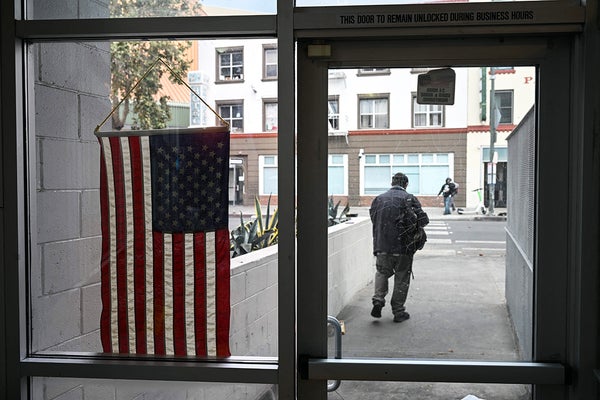It was a good night for abortion rights at the ballot box.
Five states had abortion measures on their ballots in Tuesday’s midterm elections. Michigan, California and Vermont all voted to pass ballot measures that protect abortion rights in their constitutions, ensuring that the procedure remains legal in those states. Montana voters rejected a ballot measure that would have weakened such rights, and even in Kentucky—where abortion is currently illegal—citizens voted down a measure that would have further solidified the ban.
The votes come on the heels of Kansas voters delivering a stunning rebuke of abortion restrictions in August, after the Supreme Court overturned Roe v. Wade earlier this year. The results underscore the fact that a majority of the U.S. public supports reproductive rights.
On supporting science journalism
If you're enjoying this article, consider supporting our award-winning journalism by subscribing. By purchasing a subscription you are helping to ensure the future of impactful stories about the discoveries and ideas shaping our world today.
“I think in general, folks who care about abortion rights had a very good night,” says Tracy Weitz, a professor of sociology at American University who studies reproductive rights. “I think we can say that the general public—which we have known for almost 50 years—is supportive of the right to abortion. They do not want to see states criminalize women’s health care decisions.”
In Michigan, where an abortion ban has been blocked in court, 56.7 percent of voters chose yes (with 95 percent of votes counted) on a measure that will create a state constitutional right to reproductive freedom. It covers “all matters relating to pregnancy”—including abortion and contraception. Weitz says the Michigan results are particularly consequential, because the state has an abortion ban whose legality is being deliberated in court. She notes that the state has a large population with high rates of maternal mortality, which would increase if abortion were banned, research suggests. It is also a “receiving state” for many people from nearby states where abortions are now outlawed.
In Kentucky, 52.4 percent of people voted no on a measure that would have amended the state constitution to declare that there is no right to abortion or requirement to fund abortion, with 91 percent of the votes counted. Abortion is still illegal in the state, but had the measure passed, it would have foreclosed any chance of the state challenging that law in the courts.
California and Vermont both voted overwhelmingly to amend their state constitutions to protect abortion rights. Although the procedure is legal in both states, the votes are still consequential. “One thing that has been happening in California is that patients who are faced with needing an abortion after about 24 to 25 weeks of pregnancy, for reasons that are not completely clear … have been referred out of state,” Weitz says. Passing this amendment “clarifies that serving those patients is acceptable, so patients will no longer have to leave California for those services.” Although Vermont law already allows abortions, the state has a Republican governor (who supports abortion rights but could come under pressure from his party to change that position)—and the amendment protects the right to an abortion from any effort to overturn it.
People in Montana voted no (52.4 percent, with 82 percent of votes counted) on a measure that would have enacted a law declaring any infant “born alive” to be considered a legal person. It would also have criminalized the actions of health care providers who do not make every effort to save the life of a baby born during an attempted abortion. Eighteen other states have similar born-alive laws. An abortion ban in Montana is currently blocked in court.
The balance of control of the U.S. House of Representatives and the Senate is still in play as votes are counted, although Republicans are widely favored to at least win control of the House. It is unlikely either party will be able to pass national legislation protecting or banning abortion while President Joe Biden, a Democrat, is still in office. If Republicans win the presidency and have control of Congress in 2024, they could potentially pass an abortion ban into national law. “I think we should be worried,” Weitz says, “but it’s not an immediate issue.” Nevertheless, Weitz warns that a Republican House could use its power to investigate and harass health care providers in states where abortion is criminalized.
The election results suggest that most Americans do not want to see abortion rights taken away. “I hope,” says Weitz, “that what that tells the Republican leadership is that this is just not an issue that people want their government elected officials to decide on for families.”
